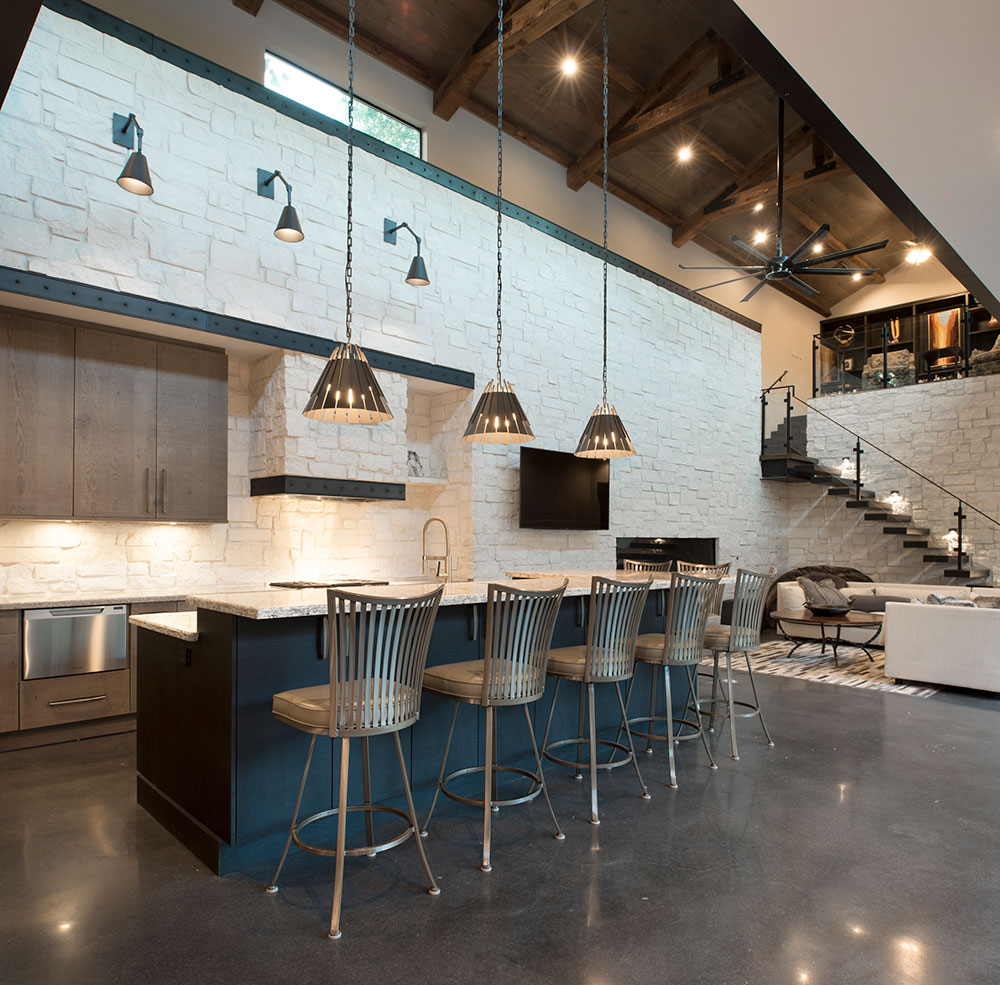
This article was written by Maria Frank and published in the Sunday, June 15, 2025 edition of the Houston Chronicle.
Biophilic design is an architectural and interior design approach that integrates natural elements into built environments; When remodeling your home, biophilic design can enhance aesthetics and well-being into your living spaces. This approach creates a harmonious environment that fosters relaxation, improves air quality, and strengthens your connection with nature.
Use Natural Materials
Solid wood cabinetry such as oak, walnut, maple, bamboo, or reclaimed wood will bring natural warmth into your space. Reclaimed wood cabinets add character while reducing environmental impact. Bamboo cabinets are highly renewable and durable with a sleek, modern look.
Choose eco-friendly low-VOC and non-toxic finishes to ensure better indoor air quality by avoiding harmful chemicals. For flooring, walls and furniture, wood, stone, bamboo or clay are excellent options.
Countertops made from organic materials like quartzite or soapstone offer rich textures and earthy tones that reflect the raw beauty of nature. Their natural veining and matte finishes provide both visual warmth and a tactile connection to the outdoors.
Backsplashes are becoming more than just functional; they are a key element of biophilic design. Natural materials, earthy tones, and handcrafted textures can mimic stone, wood, and water, bringing the outdoors in. Organic shapes like pebble mosaics and patterned tiles create a calming, nature-connected space that feels grounded and serene.
Maximize Natural Light
Consider light wood or white oak cabinets as they will reflect light and brighten the space. Glass or open shelving allows for plants, natural decor, and easy access to essentials while keeping a light and open feel. Install larger windows, skylights, or glass doors to invite more sunlight into your home.
Nature Inspired Colors and Finishes
Wood tones in light oak, deep walnut, and warm cherry bring a timeless, organic feel.
Earthy greens and soft blues, shades inspired by forests and oceans promote relaxation and a sense of nature. Neutral and warm tones, soft beige, terracotta, and taupe complement natural surroundings.
Embrace Organic Shapes, Patterns and Textures
Choose curved furniture, nature-inspired wallpaper, or biomorphic lighting fixtures.
Incorporate stone textures and wood grain designs in flooring and countertops. Natural fiber textiles like linen, wool, and cotton are good choices for rugs and upholstery.
Create Seamless Indoor-Outdoor Transitions
Install sliding glass doors or folding patio doors to connect indoor and outdoor spaces.
Design outdoor living areas with comfortable seating and greenery. Incorporate water features
like an indoor fountain or small water feature to create a calming ambiance.
Biophilic design is transforming home remodeling by reintroducing natural elements into our everyday spaces, especially in kitchens and bathrooms. From cabinets to countertops and backsplashes to lighting and layout, every natural element introduced into the home helps foster a more peaceful, restorative environment. As homeowners continue to prioritize wellness and sustainability, biophilic design offers a beautiful, timeless path toward more mindful living.
